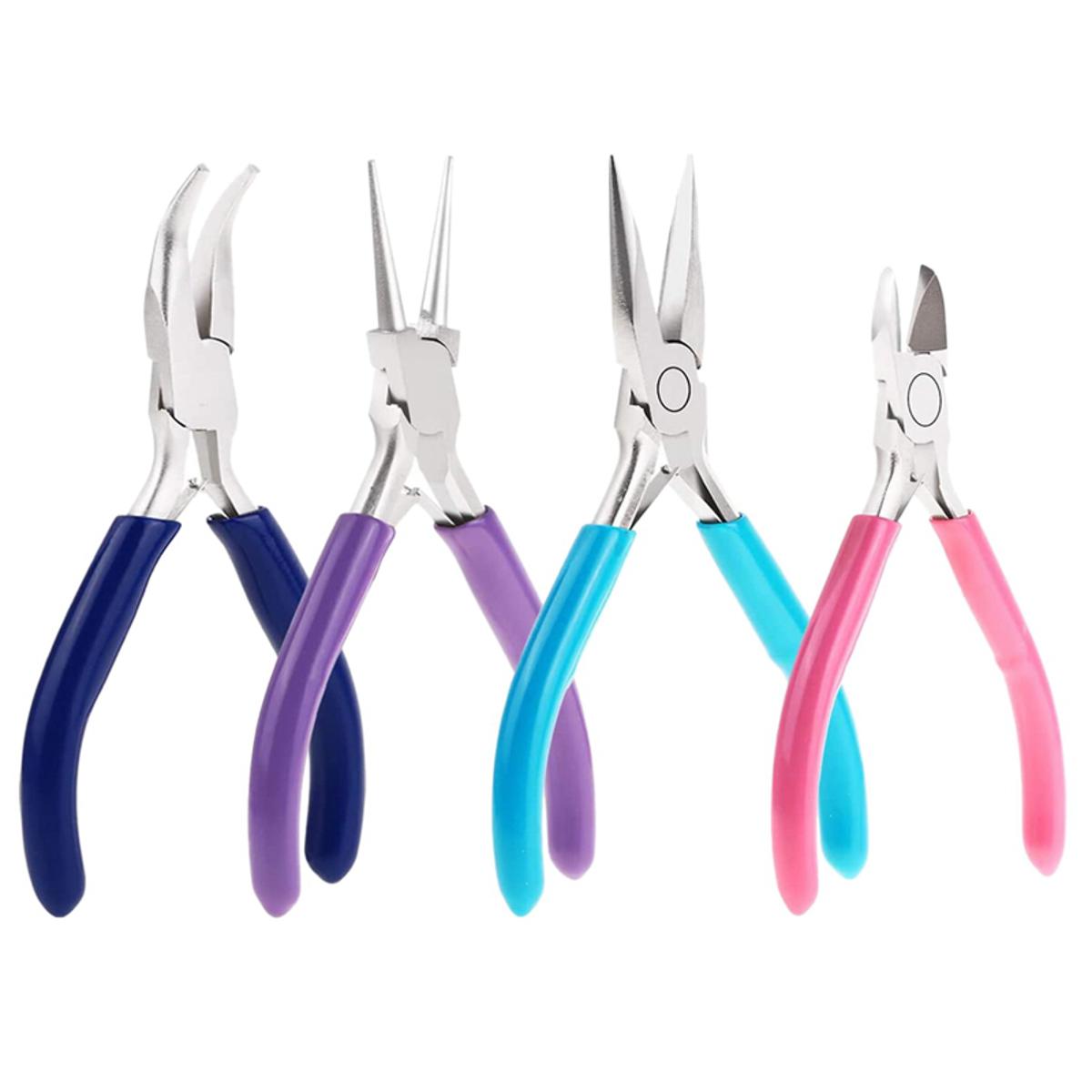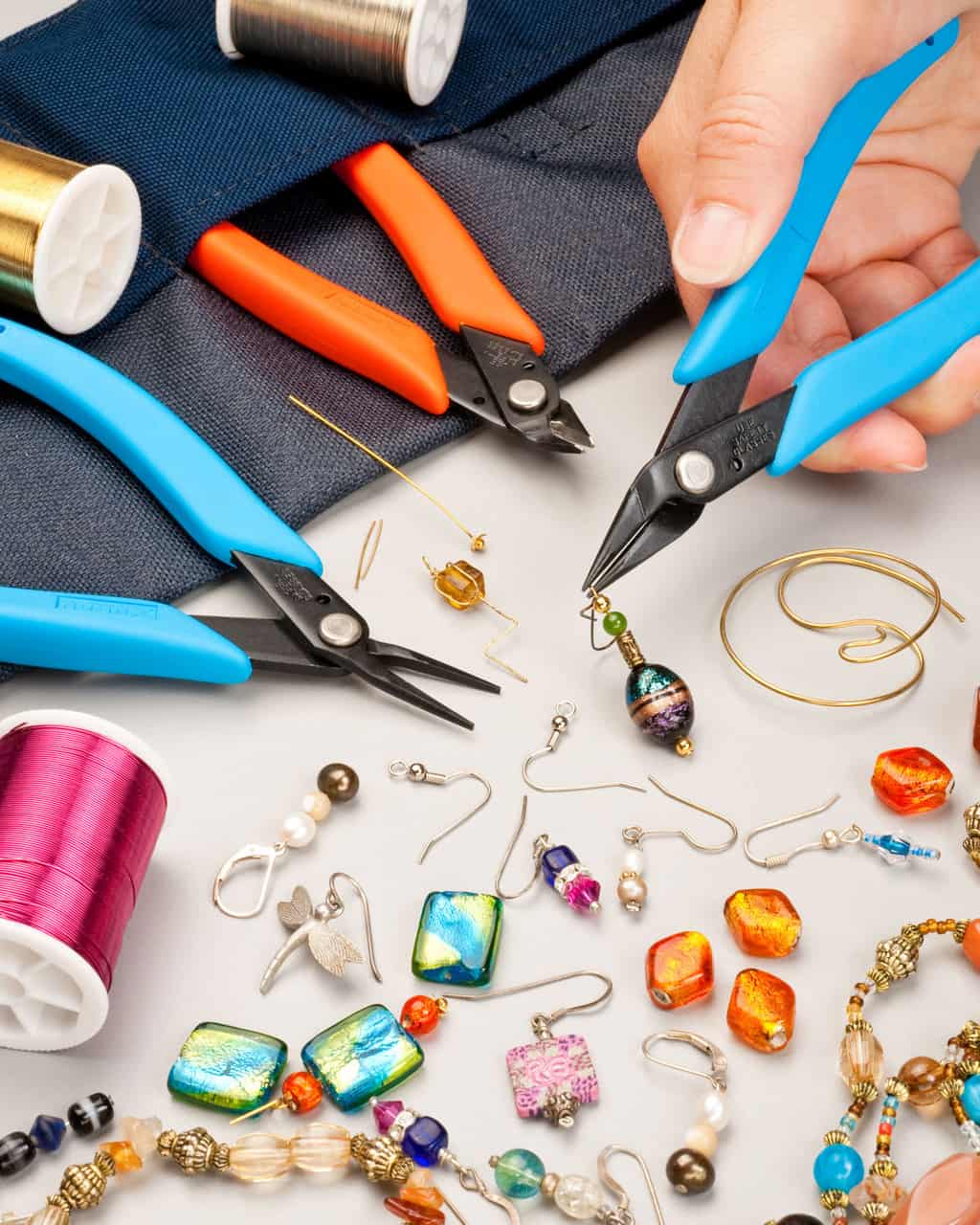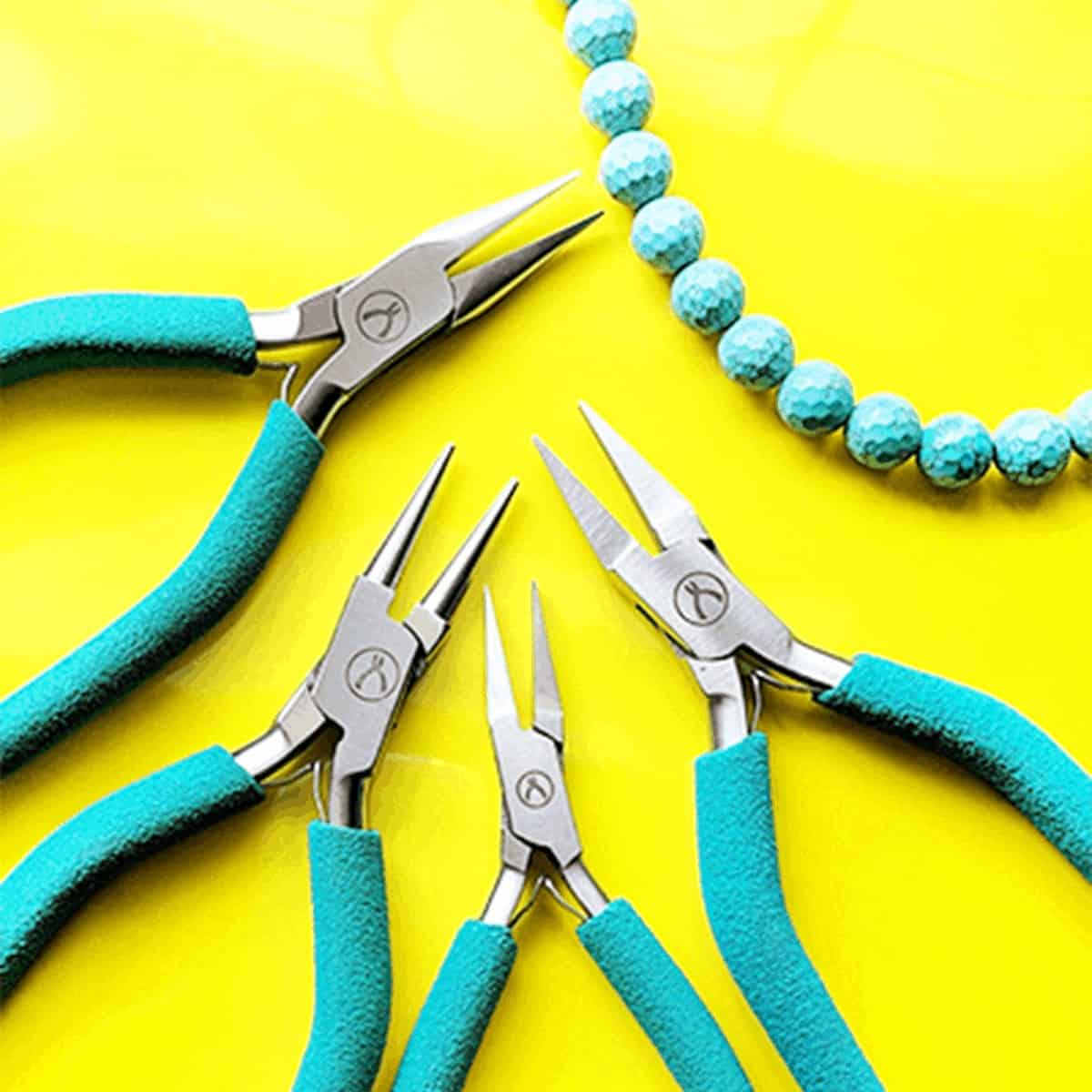The world of jewelry making offers a captivating blend of creative expression, therapeutic benefits, and the immense satisfaction of crafting personalized pieces. Transforming raw materials into stunning adornments requires not only imagination but also the right tools. The appropriate tools ensure precision, efficiency, and ultimately, the quality of the finished product. This guide delves into the essential tools for jewelry making, exploring their functions, usage, and recommendations for various techniques.

Essential Tools for Jewelry Making: Building Your Foundation
Every well-equipped jewelry studio begins with a solid foundation of basic tools. A sturdy workbench provides a stable and comfortable work surface. Look for a workbench with a smooth top and adjustable height for optimal working posture. Pliers are your essential companions in jewelry making. Round nose pliers assist in forming loops and curves in wire, while chain nose pliers excel at gripping and manipulating small components. Flat nose pliers come in handy for holding and flattening metal.
Wire cutters are indispensable for precise cutting of various wire gauges. Choose a high-quality cutter with sharp blades to ensure clean, even cuts. Files, available in different grits, are used for shaping, smoothing, and polishing metal components. A fine-grit file tackles delicate finishing touches, while a coarser file removes excess material effectively. The mandrel, a cylindrical tool, is essential for creating uniform curves and bends in wire. Simply wrap your wire around the mandrel at the desired size to form perfect loops and coils.
Shaping and flattening metal pieces require hammers and anvils. A jeweler’s hammer, with its smooth face, delivers controlled blows for shaping metal without marring the surface. An anvil provides a solid base for hammering and flattening metal. Punches and hole punches serve a dual purpose. Punches create decorative designs by stamping metal, while hole punches create openings in metal sheets for stringing beads or attaching findings.
Finally, don’t underestimate the power of measurement. Calipers ensure accurate measurements of wire thickness and component sizes, while rulers provide a reference for overall piece dimensions. Accurate measurements are crucial for creating well-proportioned and functional jewelry.

Specialized Tools for Advanced Techniques: Expanding Your Repertoire
As your skills and techniques progress, consider incorporating specialized tools into your jewelry making arsenal. Soldering tools, including torches, soldering irons, and solder, allow you to permanently join metal components. A torch provides a concentrated flame for heating metal during soldering, while a soldering iron offers more precise heat control for intricate work. Choose solder compatible with the type of metal you’re working with.
Flex shafts are handheld rotary tools with interchangeable attachments for precision drilling, carving, and polishing. These versatile tools allow you to create intricate details, engraved designs, and smooth finishes on your jewelry pieces. Bead reamers come in handy for enlarging existing bead holes to accommodate thicker cords or chains, ensuring a seamless flow in your beaded designs.
Findings, such as clasps, jump rings, and ear posts, are the essential finishing touches that transform handcrafted components into functional jewelry. Explore a variety of findings in different sizes, styles, and finishes to complement your creations. Beading tools, like bead stringers and crimping tools, streamline the process of assembling and securing beads on strings or wires. Bead stringers help thread beads efficiently, while crimping tools create secure closures on bead strands.
For creating intricate designs and replicating shapes, consider using molds and casting supplies. Silicone molds allow you to cast metal or resin in specific shapes, while casting powders and resins offer creative possibilities for incorporating different colors and textures into your jewelry.

Safety Considerations for Jewelry Making: A Priority for Every Crafter
Safety is paramount when working with jewelry making tools, particularly sharp objects and heated tools. Protective eyewear, such as safety glasses or goggles, shields your eyes from flying debris and sparks generated while cutting, drilling, or hammering. Wearing gloves protects your hands from cuts, burns, and exposure to chemicals like solder or polishing compounds.
Proper ventilation is essential when using soldering torches or other tools that emit fumes. Ensure adequate airflow in your workspace to avoid inhaling harmful fumes. Finally, dispose of hazardous materials, such as soldering waste and chemical solvents, responsibly according to local regulations.
Selecting the Right Tools for Your Needs: A Personalized Approach
There’s no one-size-fits-all approach to jewelry making tools. Consider your individual needs and preferences when building your collection. Starting with a basic set of essential tools allows you to explore fundamental techniques and build a strong foundation. As you develop your skills and delve into more advanced techniques, gradually expand your tool collection.
Local jewelry making stores and online retailers offer a wide range of tools, allowing you to explore various options and compare features. Reading online reviews and recommendations from experienced jewelry makers can be invaluable in making informed choices. Remember, investing in high-quality tools is an investment in your jewelry making journey. Well-made tools offer superior durability, precision, and a more comfortable working experience. Look for tools constructed from sturdy materials with comfortable grips to prevent hand fatigue during extended use.

Caring for and Maintaining Your Jewelry Making Tools: Ensuring Longevity
Proper care and maintenance are essential for extending the lifespan and effectiveness of your jewelry making tools. Cleaning your tools regularly removes dirt, debris, and any buildup of materials that can hinder their performance. A soft brush or a damp cloth is sufficient for most tools, while solvents might be necessary for removing stubborn residue.
Organize your tools in a designated toolbox or drawer to prevent damage and make them easily accessible. This not only saves time searching for tools but also prevents them from getting lost or misplaced. For tools with moving parts, like pliers and flex shafts, consult the manufacturer’s instructions for proper lubrication to ensure smooth operation. Regularly inspect your tools for signs of wear or damage, such as loose screws, dull blades, or chipped surfaces. Promptly replace worn-out tools to maintain optimal performance and safety.
Upgrading Your Jewelry Making Skills: A Continuous Journey
The world of jewelry making offers endless opportunities for learning and growth. Consider taking jewelry making classes or workshops to refine your existing skills and learn new techniques. These classes provide valuable hands-on experience under the guidance of experienced instructors.
Joining online forums and communities connects you with other jewelry makers, fostering a sense of community and shared passion. These platforms offer a space to exchange ideas, troubleshoot challenges, and gain inspiration from fellow jewelry enthusiasts. Experimenting with different materials, techniques, and designs is key to expanding your creative repertoire. Don’t be afraid to step outside your comfort zone and try new things.
Staying up-to-date with the latest trends and advancements in jewelry making keeps your work fresh and innovative. Explore jewelry making magazines, blogs, and online resources for inspiration and to discover new tools, techniques, and materials.

Conclusion: Embark on a Creative Journey
This guide has equipped you with a comprehensive understanding of essential and specialized jewelry making tools. Remember, the right tools empower you to translate your creative vision into stunning pieces of jewelry. As you embark on this captivating journey, embrace the process of learning, refine your skills, and most importantly, have fun expressing your creativity through the art of jewelry making.